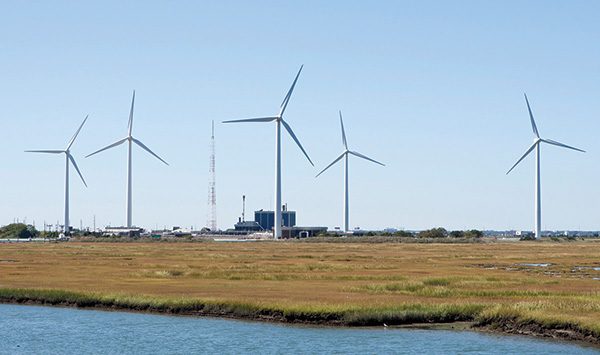

Turner Publishing and the New Jersey State Archives.
THEN: Believe it or not, you are looking at something pretty high tech. Not the horse and cart, but what it was delivering—manufactured ice, a technology that revolutionized food storage around the turn of the 20th century. Presaging today’s debate about the safety of genetically modified foods, people back then worried that manufactured ice was bad for you—unlike, say, natural ice cut out of frozen winter ponds and stored. With electric utilities like Public Service forming around the same time, that question would soon become moot. In 1903, Public Service had 18,262 electric meters in service in New Jersey; by late 1943, more than a million.

Colin Archer/ANJ.
NOW: Compared to solar power—New Jersey generates more than any state but California—wind power is in its infancy here. The Jersey-Atlantic Wind Farm in Atlantic City, left, was the first coastal wind farm in the U.S. when it opened in 2005. In Bayonne last June, a single 260-foot-tall turbine began generating electricity, helping run two sewage-pumping stations. The frontier, though, is offshore. At least three such projects have been proposed. The biggest, Garden State Offshore Energy, with 96 turbines placed 16 to 20 miles off Avalon, has been in development since 2009.
